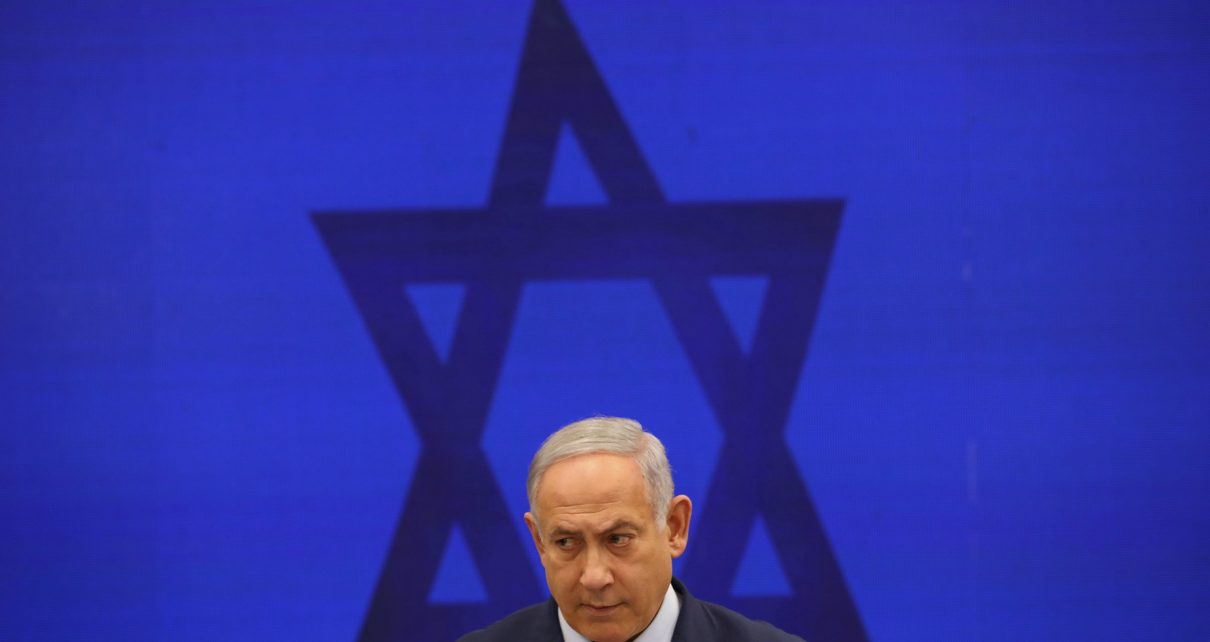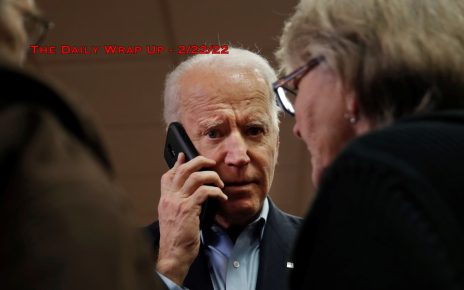As debate rages on about the current war between armed Palestinian factions and Israel, a prominent argument claims Israel is now facing “blowback” for its policy of aiding Hamas, the party that governs the Gaza Strip. So, did Israel create, fund, or promote Hamas?
To understand the political party/armed group known as Hamas, we first have to understand the basics. Hamas is an acronym for “Harakat Al-Muqawamah Al-Islamiyyah,” or the “Islamic Resistance Movement” in English. While every Palestinian mainstream political party/armed group other than the mainstream branch of Fatah is considered to be a terrorist organization in the West, such classifications are useless when attempting to understand these parties, groups, and movements. For example, the Popular Front for the Liberation of Palestine (PFLP) is a Marxist-Leninist party that was founded by a Palestinian Christian, George Habash, and is placed under the same terrorist classification as Hamas in the US, UK, and EU.
Hamas was officially founded in 1987 during the first Palestinian Intifada (uprising) by figures such as Sheikh Ahmed Yassin and Abdel Aziz al-Rantisi. In 1988, they issued their first founding document, which Western politicians and media often refer to as the “Hamas charter.” The statement strikes a radical posture against Jews specifically and cites Israelis’ oppressive behavior against civilians. It also includes religious history and quotes from Islamic texts to explain the movement’s foundations. Since then, Hamas has moved away from the original charter and amended it multiple times, most recently in 2017. The 2017 document affirms that Hamas would, in theory, agree to a two-state solution and rejects anti-Semitism explicitly—a far cry from their 1988 charter. It states:
“Hamas rejects the persecution of any human being or the undermining of his or her rights on nationalist, religious or sectarian grounds. Hamas is of the view that the Jewish problem, anti-Semitism and the persecution of the Jews are phenomena fundamentally linked to European history and not to the history of the Arabs and the Muslims or to their heritage. The Zionist movement, which was able with the help of Western powers to occupy Palestine, is the most dangerous form of settlement occupation which has already disappeared from much of the world and must disappear from Palestine.”
This is important context for any analysis of Hamas. Such analysis is usually predicated on the idea that the Hamas movement is inherently terrorist and has a charter that speaks of killing all Jews. Although the movement does take a radical position on various issues, the mainstream interpretation of the group as a bunch of raving-mad Jew-haters who seek to commit genocide is grossly incorrect and intellectually lazy.
The first line of Hamas’ leadership is mostly now dead or not in decision-making positions. It is also important to identify most of the founders and leaders in the movement. Sheikh Ahmed Yassin, who was assassinated in 2004, stated in an interview in 1988 that “The best solution is to let all – Christians, Jews and Muslims – live in Palestine, in an Islamic state.” This contradicts the ideas of the original charter. Yassin personally experienced the results of Israel’s ethnic cleansing: In 1948, Zionist militias forced him out of his village of Jura, and he was made to settle in a refugee camp in Gaza. Another of Hamas’ founders, Dr. Ibrahim Fares Al-Yazouri, was born in the Palestinian village of Beit Daras and was forced out of his home by Zionist militia groups when he was eight years old before eventually fleeing to a refugee camp in the Gaza Strip. A look at the lives of the majority of Hamas leaders, past and present, reveals a clear trend: They often grew up in refugee camps and were subjected to horrific crimes in their youths. This is also true for the likes of Yahya Sinwar, the Hamas leader in Gaza, and Mohammed Deif, the leader of the group’s armed wing.
When we understand the stories of those who created and led the movement, their violent postures against Israel become much clearer. However, the Mujamma Islamiyya, which was a precursor to Hamas, was originally opposed to armed struggle. This has been heavily documented, and it helps us begin our journey into the history of Israeli involvement in the Islamic Resistance Movement’s founding.
Did Israel Create Hamas?
The Islamic social and charitable group known as the Mujamma Al-Islamiyyah was created in 1973 by Sheikh Ahmed Yassin. At the time, Sheikh Ahmed Yassin was considered the head of the Palestinian wing of the Muslim Brotherhood. Colloquially, the group was called “Ikhwan,” a term that refers to the Muslim Brotherhood in Arabic. It is widely understood that the Mujamma was, in fact, the Palestinian branch of the Egyptian Muslim Brotherhood, but it was not permitted to operate inside the Gaza Strip under the rule of Egypt. This changed in 1967 when Israel illegally occupied Gaza.
The Mujamma built schools, mosques, libraries, and the Islamic University of Gaza. The organization formed religious institutions, operated medical clinics and orphanages, and provided food and aid to those in need. In doing so, it gained a base of support in the occupied territories. This element of the Mujamma continued with the founding of Hamas.
The Mujamma pushed a particularly conservative view of Sunni Islam on the population of the Gaza Strip. Numerous accounts from Palestinians living in Gaza during the 1970s and 1980s confirmed organization members’ aggressive and often violent actions against Palestinian nationalists, liberals, communists, and others. Israel, which was occupying Gaza internally at the time, exploited the Mujamma’s often forceful enforcement of their ideology. The Israeli government employed a hands-off approach to these enforcements. Palestinians claim to have seen Israeli soldiers standing back and watching in amusement as Mujamma members attacked secular Muslims for behaviors like drinking alcohol or dressing in allegedly revealing ways. Israeli sources confirmed to the Wall Street Journal that Israel was lenient toward Mujamma activists as a tactic to let them combat the secular-nationalist groups.
In 1979, the Israeli occupying authority officially recognized the Mujamma and allowed them to work on their charity projects. They even elevated members of the Mujamma to positions of power in the Gaza Strip. Although the work of the Mujamma was primarily funded by the Gulf Arab states, former Israeli officials claim that Israel provided hundreds of thousands of dollars in funding to the Mujamma. Israeli Brigadier General Yitzhak Segev claimed the Israeli government gave him a budget for this. With its support for the Mujamma, Israel aimed to stoke division and create a counterbalance to active resistance factions that were waging armed struggle against Israel. Those factions were parties under the Palestine Liberation Organization (PLO) led by Yasser Arafat.
Until the mid-1980s, when Ahmed Yassin began forming what was called al-Majd, a security apparatus, the Mujamma had no armed component to it. Even after Sheikh Ahmed Yassin was arrested in 1984 for orchestrating weapons smuggling, the group did not openly advocate violence against Israel nor did it launch attacks against the occupying military. Mujamma’s view, that violence was not the answer drew enormous criticism from another Islamic group that still operates today: the Palestinian Islamic Jihad (PIJ) movement. In his study on the history of the PIJ movement, Erik Skare articulates the competition between the well-funded Mujamma and the PIJ movement, which was relatively poor. Skare notes in his book, A History Of Palestinian Islamic Jihad: Faith, Awareness, And Revolution In The Middle East, that while PIK is an armed movement involved in the political sphere, Hamas is the opposite. What may have contributed to Hamas’s formation, to begin with, was that the PIJ launched its own military endeavors in the 1980s, which left the Palestinian branch of the Muslim Brotherhood in a difficult position.
A Misinterpretation
A famous speech delivered by former US representative for Texas, Ron Paul, is often used to argue that Hamas is Israel’s invention. This claim also often cites quotes from former Israeli officials who commented on their backing of the Mujamma in the 1970s and 1980s. As Ron Paul stated, “If you look at the history, Hamas was encouraged and really started by Israel, because they wanted Hamas to counteract Yasser Arafat.” Many point to this speech when they allege that Israel created Hamas and still controls the group. Although what Dr. Paul said was true, it was broad and is often misinterpreted.
It is true that Israel was using Hamas as a counterweight to the Fatah movement at the start and that the Mujamma was in part funded by the Israeli government (in addition to Israel officially recognizing the group as a charity under occupation). However, this does not prove that Israel engineered the movement from the inside. Still, by allowing the Mujamma to grow as a charitable group as a tactic to combat the influence of groups like Fatah and the PFLP, Israel shares partial responsibility for the emergence of Hamas. Further, Israel’s brutal policies and its mass expulsion of as many as 800,000 Palestinians from their homes between 1947 and 1949 also played a direct role in the formation of Hamas. In truth, there would be no Hamas without Israel. The Israeli government rules via illegal occupation, annexation, ethnic cleansing, and an ideology based on ethnic/religious supremacy. In these respects, Hamas is a creation of Israel. However, the suggestion that Hamas is somehow a tool under the control of the Israeli government lacks historical perspective and evidence and is counterfactual.
Did Netanyahu Funnel Money to Hamas?
Israeli Prime Minister Benjamin Netanyahu has historically been opposed to the establishment of a Palestinian State along the 1967 borders—a two-state solution. He has actively played a role in destroying such plans. Many Israelis have even accused Netanyahu of encouraging the Israeli extremist who assassinated Israel’s former PM, Yitzhak Rabin. Rabin had signed the Oslo Accords with the Palestine Liberation Organization (PLO) signaling his openness to an eventual two-state settlement of the conflict. Netanyahu and his supporters viewed Rabin as a traitor. When Benjamin Netanyahu’s Likud Party made it into power, they ensured there would be no peace with the newly formed Palestinian Authority (PA). Instead, it has been a clearly stated intention for Israel to annex areas of the West Bank, not cede control to the PA.
Israel besieged the Gaza Strip in 2006, later tightening the siege in 2007 after a failed US-backed coup attempt that was designed to remove the democratically elected Hamas leadership from power in Gaza. Following this, the Israeli government entered into a period of constant assaults against the occupied territory. The most brutal Israeli attacks against Gaza were carried out in 2008- 2009, 2012, and 2014. Following these attacks, there was no clear solution for Israel in terms of Benjamin Netanyahu’s designs for the besieged coastal enclave. In 2018, experts at the UN officially declared the territory would be unliveable by 2020.
With no viable strategy to either defeat Hamas or make peace with them, Benjamin Netanyahu pursued another path forward: an attempt to bribe the Gaza-based movement into remaining silent and refraining from creating a problem for Israel in the south of the country. This has been carried out with the Israeli government’s cooperation around periodic transfers of Qatari money into the Gaza Strip, which have tallied up into hundreds of millions (USD). What is important to note here, however, is that Hamas is the governing authority in Gaza and is in desperate need of funds to survive, which is why they have, at times, taken the Qatari grants in exchange for calm.
Some Israeli analysts have started to build the case that Benjamin Netanyahu has bolstered Hamas for nearly two decades while undermining the Palestinian Authority. This narrative, despite its intriguing arguments, is lacking in logic and is, in some cases, an attempt to transfer blame to Netanyahu alone while detracting from the roles of the Israeli government, intelligence community, and army. While it is true that Benjamin Netanyahu has undermined the PA, it is also true that the PA has remained a loyal partner that follows Israel’s every wish for controlling the West Bank. The PA’s lack of legitimacy comes down to its corruption, refusal to hold elections, brutality against Palestinians, and its open collaboration with Israeli occupation forces. Israel will not build legitimacy in a PA that is bought and paid for by the EU and US (through foreign aid and more general support) while working for the Israeli government. The PA will only build legitimacy by standing up for its people. Meanwhile, Netanyahu has weakened the PA through its periodic financial strangulation of the PA in addition to his refusal to engage in any talks for a solution to the conflict.
Earlier this year, far-right Israeli Finance Minister Bezalel Smotrich attempted to block the release of funds to the PA, though he eventually backed down under pressure from Netanyahu. The past Israeli government, headed by Naftali Bennet and followed shortly after by Yair Lapid, also permitted Qatari funds to be sent to the Gaza Strip. This was the most diverse Israeli coalition government in the state’s history. If you look at the last Israeli government’s strategy for Gaza, it presents as offering financial relief in return for calm. This is the same policy that Netanyahu has been following. His approach is not unique compared to previous Israeli policy.
The idea that Benjamin Netanyahu strengthened Hamas while others would have done differently is simply untrue. There have always been other ways to stop Hamas from developing militarily and plotting an attack like the one carried out on October 7, but they were never entertained by Israeli politicians beyond a few fringe voices that are marginal and possess no power in the Knesset. If the Israeli government wants to stop Hamas from attacking, the solution is simple: They need only end the siege or negotiate with Hamas, but peace has never really been considered. In fact, Israel flatly refused all Hamas attempts to reach an agreement.
Conclusion
Hamas is a multi-faceted movement. It is heavily rooted in Palestinian civil society but also possesses a robust military wing—the Izz ad-Din al-Qassam Brigades—along with a political wing. The armed wing of Hamas has often been at odds with the political wing completely. Until the emergence of Yahya Sinwar as the leader of the movement inside the Gaza Strip in 2015, they were in conflict on various issues. Even within its politburo, there is a great divergence of viewpoints and ideology in Hamas, making it far from a monolith.
Israel most certainly played a role in the emergence of Hamas through its support and hands-off approach toward the pre-cursor to the group. But the narrative that the movement is the equivalent of some kind of Manchurian candidate is false. Hamas is a complex organization that has, for instance, supported fighters against the Syrian government during the dirty war on Syria but also provided fighters towards the end of the conflict, which helped the Syrian Arab Army (SAA) recapture the Yarmouk refugee camp from the myriad of extremist groups, including Daesh, that controlled it. While the likes of former Hamas leader Khaled Meshaal withdrew his support for Bashar al-Assad and assumed an anti-Syrian government position, the likes of Musa Abu Marzouk and Hamas co-founder Mahmoud Zahar, believed that the movement should have backed the Syrian president. The group’s factions hold views that are often at odds with each other.
Depictions of Hamas in the West are often very shallow. They lack understanding of Palestinian society and the history of the conflict and are often just attempts to delegitimize any Palestinian resistance against occupation. While many negative things can be said about Hamas, these are not up for debate in the West—only the idea of Palestinian armed struggle is. Israel has made various mistakes in its strategy against the Palestinian liberation movement, which includes its horrifying policy of keeping 2.3 million Gazans trapped in the concentration camp called Gaza. Israel does not control Hamas, and the Qatari aid grants are not responsible for Netanyahu’s strategy of building up Hamas’ strength. However, history shows that Israel helped create Hamas in two ways: First, they aided the growth of the Mujamma al-Islamiyyah in opposition to other Palestinian parties. Second, they continued their quest to completely destroy the Palestinian people while offering them no option for peace.





